Why the Precious Metals Bull Market Is Just Beginning - Weekly Wrap Up

After breaking out early in the new year, it’s been sideways and down for precious metals lately. But don’t let the short-term picture fool you. Host Craig Hemke sits down with legendary resource investor Rick Rule of Sprott, Inc. to break down all the gold and silver news you need to understand where we are in the bull market.
In this edition of the Weekly Wrap-Up, you’ll hear:
- Why the bull market is just beginning?
- Which investment is a guaranteed loser—and why?
- Plus: Rick’s forecast for silver and commodities.
“This is sort of a replay from our last discussion. You’ll recall we were coming off an extraordinarily odd market. And the market began to collapse, a little bit, probably of its own weight. And this is very, very common in resource bull markets. So, my first comment would be as it was then: real natural resource bull markets—precious metals bull markets—are of substantial duration.”
To hear Rick’s full thoughts on the week’s gold and silver news, listen here:
Male: You are listening to the "Weekly Wrap-Up" on Sprott Money News.
Craig: Happy Friday from Sprott Money News at sprottmoney.com. It is Friday, January 22nd, 2021, time for your weekly wrap-up. Eric remains unavailable, but joining us this week is his old friend Rick Rule. Rick, of course, of Sprott, Inc., and one of the most respected and trusted names in the precious metal sector. Always good to hear from Rick. Rick, thank you so much for joining me today.
Rick: Well, a pleasure and an honor to sit in for Eric on his channel. Thanks. Thank you, Craig, for giving me the opportunity.
Craig: Hey, it is our pleasure. And again, I wanna thank everybody for tuning in today. If you enjoy listening to these "Weekly Wrap-Up," "Ask The Expert" podcasts, be sure to like and maybe subscribe and share on the channel that you're listening to. We're excited to have a new feature coming from Sprott Money, I think beginning in February. We're gonna have a monthly podcast session with Chris Vermeulen. Chris and I will sit down once a month and a look at the charts that he's analyzing and have him explain what it is he'll be watching in the month ahead. So look for that sometime...oh, we'll probably do that in about two weeks. We'll do it every month going forward. Oh, and one more thing, "Ask The Expert" returns this month. We'll be recording next week with Luke Gromen. Many of you are familiar with Luke, a very wise, experienced, smart guy. And so if you have any questions for Luke, send them in, that's our chance to answer your questions. The email address is the word submissions, with an S, submissions@sprottmoney.com. We'll try to get to as many of your questions as we can.
But for now, hey, I don't wanna waste any more time I got Rick Rule on the line for crying out loud. Rick, it's been an interesting start to the year. We came out of the box charging. The first couple of trading days of the year looked like we were breaking out of some technical formations and we've been, kinda, sideways and down ever since. What are your thoughts as the year begins, you know, any idea of where we might be headed?
Rick: Well, this is, sort of, a replay from our last discussion. If you'll recall, we were coming off an extraordinarily hot market and the market began to collapse a little bit probably of its own weight. And this is very, very common in resource bull markets. So my first comment would be, as it was then, real natural resource bull markets, precious metals bull markets are of substantial duration. The first one in my career went 11 years, 1970 to 1981. The second one went 11 years, depending on how you measure it, 2000 to 2011. So when people ask me, has the market run its course, given that this market has been underway for two-and-a-half or three years, I would say that if past is prologue, the answer is no. Dimension's important to understand too. The 2000 to 2011 market saw the gold price go from $253 an ounce, if my memory serves me well, to almost $1900 an ounce. So when people say to me, "Gold is cleared from $1100 to $1850, is the game done?" my suspicion is not likely.
On the other hand, two notes of caution that one must pay attention to, maybe three. The first is that within a secular bull market, which I believe we're in now, you can have unbelievably severe cyclical declines. That is to say that the popular indexes can shed 20% or 25%. In fact, if you go back to the 1970s bull market between 1970 and 1975, the gold price advanced from $35 an ounce to $200 an ounce, a sixfold move. But in 1975 when the U.S. Fed allowed interest rates to go up and the dollar strengthened, the gold price fell from $200 to $100 before the Fed lost its nerve. People who were shaken out in that 50% cyclical decline missed out in a move, a subsequent move on the gold price from $100 to $850.
The lesson here is that we are, I think, in a cyclical bull market and both the metal and the stocks over time will go much higher, but you have to have the psychological strength and the financial strength to stay the trade. It's very important that you have the courage to stay the trade. If you don't, just get out of the way. The second lesson, I think that we need to learn, is that in a red hot bull market everything rises the good, the bad, and the ugly. I personally believe that out of, say, 2000 junior mining listings worldwide only 300 are viable, which is to say the universe of truly speculation-worthy companies among the juniors is probably 15% of the total population.
So irrespective of your belief with regards to where gold is headed or where silver is headed, unless you are really adept at trading the narrative, remember that stock selection is absolutely key. Do not own too many names, do not own names that you aren't familiar with. That's the most lethal mistake you can make. Other than that, sit back, relax and enjoy the ride. The set of policy circumstances that face us in your country and mine, quantitative easing, debt and deficits, negative interest rates are all tailor-made for gold in the long term.
Craig: Yeah. But Rick, you can explain this better than I. And so, as you were speaking, I thought I'm gonna ask Rick to explain this again. You know, the key correlation, I guess the most dominant correlation for the gold price over time has been negative, real interest rates. And I've heard you explain before why that's the case in terms of making the 10-year treasury note, the foundational investment around the planet, a guaranteed loser. Can you take a second to explain to everybody why that is?
Rick: Yeah. I mean, I'm not a social psychologist or a behavioral finance guy, but my observation has been that the most important determinant of the gold price has been the real or negative real interest rates in Fiat currencies. Because the thing that moves people from outside gold into gold is concern about the purchasing power of their savings. A negative real interest rate, understand, is not a natural phenomenon. The idea that savers would pay borrowers to take their money from them, accept the risk, and pay for that privilege is stupid. It's a circumstance that's contrived and contrived circumstances, which is to say a government declaring war on savers on behalf of spenders with negative real interest rates is the primary circumstance that drives people into gold.
If you look, as an example, right now at the U.S. 10-year treasury, it is hovering, it's up to, sort of, 1% interest in a currency that the Congressional Budget Office suggests is depreciating at 1.6% a year. In other words, if you give the U.S. government your money, they promise to reduce your wealth by six-tenths of 1% cumulative and compounded over 10 years. Not a very good deal.
Craig: No.
Rick: Now, let's take it away from a personal level to an institutional level. My partner, John Hathaway, who runs our 40 Zacks Mutual Fund in the United States told me that institutional investors worldwide manage approximately $100 trillion and their mantra has always been 60% debt, 40% equity...sorry, the other way around, 60% equity, 40% debt. The idea being in periods of time when there was economic weakness and the equities portfolio declines that interest rates would decline and hence the capitalized yield, the principal, and their bonds would increase, bonds being, if you will, a hedge on their equity holdings, but you can't afford to hedge with a negative real yield. If 40% of your portfolio as a long-term manager is guaranteed to lose you 60 basis points a year and you know that if the interest rate rises that the principal value of the bonds is going to decline as well, you can't afford to hold bonds.
So worldwide, we have a circumstance where institutional managers hold about $40 trillion worth of debt, and they have to begin to diversify out of that. I'm not saying that $40 trillion is gonna come into gold, I'm saying that a little bit of that $40 trillion is gonna come into gold because it needs to find an alternative asset class. That's the second reason why negative real interest rates are such an important determinant of the gold price and the price of gold equities.
Craig: And Rick, when you think about that, the amount of cash that could potentially flow into gold in all its forms, you know, whether it's futures contracts, on allocated accounts, ETFs, mining shares, that's a lot of cash coming into what is a very tiny market, relatively speaking. I've always called that the Rule rule. And this relates back to what you'd said earlier about what happened the last time real interest rates fell this far back in the 1970s, and then what happened to the gold price and some of the mining shares. You remember that well. I guess my final question, which is a long intro to it, I might add, maybe you can explain again further how that all, kinda, comes together for us in the future.
Rick: Well, I'd like to take credit for that, but it was actually JP Morgan Chase, to be honest with you, who did the study. And what the study showed...You know, you take the good parts of a company and you don't take the bad parts, you know, simple as that. What the study showed was that the market share of precious metals and precious metals-related assets in the United States, which is the largest savings and investment market in the world, was approximately one-half of 1%, which is to say that gold, precious metals, and precious metals equities comprise one-half of 1% of savings and investment assets in the United States market.
In 1981 or 1982, the peak of the prior bull market in gold, it is estimated that the same market share number was 7%, which is to say 14 times higher. What's more important is that the three-decade mean market share of precious metals and precious metals-related assets over the past three decades has been between 1.5% and 2%. So gold doesn't have to regain its former popularity, all it has to do is revert to mean for demand for precious metals-related assets to triple in the most important savings and investment market in the world.
Craig: That's right. And you just start to do the math and you think, oh, okay, yeah, I can see where that works. I've compared this bull market you mentioned earlier about how hard it is to stay invested. I keep using the metaphor of trying to ride an actual bull all the way to the bell, that sound about right?
Rick: Right. This is probably a little easier. I mean, this is something that a 67-year-old can do. I wouldn't wanna try and ride an actual bull.
Craig: I guess that's true. It's not like death is involved or getting gored. Every once in a while you look at your screen and you feel like you're getting gored. All right. We had a couple of questions sent in and I always try to, kinda, consolidate them to get as many people to hear an answer to their question that they so graciously sent in as we could. So I've got three I wanna ask you before we wrap up. I think the first one, we had a number of people ask about this so I thought that was good timing that we were discussing the mining shares. And this is just simply in general, but in your experience, do you think royalty companies might be a better inflation hedge than just simply owning precious metal miners?
Rick: I don't think that royalty companies are a better inflation hedge for the ironic reason that they're more efficient. During periods of rapidly rising gold prices, the more marginal companies and the least efficient companies do better. I believe, however, that the margin of safety built into royalty companies, pardon me, operating margins in excess of 85% make them better risk-reward candidates in a portfolio. In other words, if you are looking for maximum leverage, you don't wanna be in the royalty and streaming companies, but if you want a prudent mix of risk to reward, you would overweight royalty companies relative to other kinds of companies.
Craig: Almost a little bit of an asset allocation type thing where you mentioned earlier, the traditional institution allocation of 60% equities, 40% fixed income. So you zig and zag, maybe that's how you work royalty companies in?
Rick: Well, I think you need to decide who you are as an investor or a speculator. There are some people who are willing to lose vast amounts of money. At least they represent themselves as being willing to lose vast amounts of money because they have a belief in the gold price. In other words, they're willing to take inordinate amounts of risk. Investors who have traditionally been more rational, that is to say have had a more balanced approach to a sector, they want the sector beta but they would like the sector beta with more safety would lean towards the royalty companies. It's important to note that in a precious metals bull market, the dimension of the game, which is to say the amount by which the index itself goes up, is so extraordinary that taking a whole bunch of risks to outperform the index is probably silly. Capturing the index move, taking less individual company risk, and that would include a prominent selection of royalty companies, is probably a more intelligent if less fun way to play the game.
Craig: All right, let's move on to the second, I guess, section of questions, how to deal with, and I've seen this too, a lot of information out there about a renewed general commodity bull market, a lot of breakouts in maybe the long-term continuous commodity index, the Bloomberg commodity index, and obviously, a lot of people are looking at maybe a weaker dollar in the months and years to come. I think part of that, to me, is why we're seeing some investment houses and research firms come out with bullish statements on silver. For you, what do you see in commodities, in general, but then silver, specifically, in the months ahead?
Rick: Well, silver traditionally has been, if you will, gold on steroids, and the silver stocks in particular, because of the various small number of viable ones tend to have exaggerated moves to the upside and consequently exaggerated moves to the downside. The junior silver sector beginning in June of 2020 became uninvestable because it became overpriced. The decline that we have seen in the junior precious metal sector in the fourth quarter of 2020 has brought the higher quality silver stocks back into buy ranges, from my point of view.
So personally, in my own precious metals portfolio, I have begun to overweight silver again. Now, it's important to note that there are, I don't know, probably 60 or 65 junior silver listings worldwide, and probably 10 are worth owning. So again, stock selection is absolutely paramount, but I have begun to overweight, in my own portfolio, the silver equities for at least a trading position because I think just as they were overbought, they're now oversold.
Craig: Yeah. How about some of the other, I guess, industrial base metals, you know, with everything going on with the Biden administration, do you look at...well, we can start with copper, that's been moving like crazy, but how about, like, some of the battery material, you know, lithium and cobalt and nickel, things like that?
Rick: Let's deal with broad commodities and then we'll deal with the specialized commodities. You may recall, in our last interview, I suggested that over the next five years, we were in for two bull markets, the precious metals bull market first, and an industrial materials bull market later in this decade. My thesis was that the economic malaise that seemed to me to be likely as a consequence of too much stimulus and COVID would constrain demand for industrial materials through the first couple of years of this decade. But then a lack of sustaining capital would lead to supply shortages and we'd get a bull market.
To quote the American country singer Patsy Cline, "I was so wrong." The stimulus that we have seen in the market, and more particularly the quantitative easing that we have seen in China, has led to a much more rapid economic recovery than I ever would have dreamed of. And so we have a circumstance where the whole commodity complex seems to be going higher. I'm personally very concerned in the near term that this is a false breakout. I continue to believe that the financial economy is stronger than the Main Street economy as a consequence of excess liquidity. And I am cautious about the whole commodity complex.
What people need to understand in commodities, and this is a hard lesson to learn, is that commodities that are necessary for the lifestyle that the world either enjoys or wants to enjoy, things like copper for electrification, or oil for running automobiles, Greta Thunberg notwithstanding, will ultimately trade at or above their total production cost, which includes the cost of capital. So, as an example, if you see the copper price below $3.50 U.S. per pound for an extended period of time, copper producers won't make sustaining capital investments and they won't make new project investments. And irrespective of whether demand increases or not, supplies will fall and the prices will rise. This phenomenon can take four years or five years or six years, which for a speculator can be an eternity.
But the truth is that investing in commodities where ongoing demand is assured, where the commodity is selling for less than the cost of production, is a very certain thing over time. It has worked out very well for me. And when a commodity is deeply out of favor, in addition, like oil was in the middle of last year, it becomes an absolute no-brainer investment for people who have courage and for people who have patience.
Moving on from that to the currently hot sectors, which is to say the battery metals as they're called, they are, sort of, a mixed lot. The narrative behind them is extraordinarily strong and in a very broad sense, it's true. I think speculators would do well to look beyond electric vehicles and think more in terms of the electrification of the world. There are about 1.2 billion people worldwide that don't currently have access to electricity. They want it and increasingly they have the incomes and the net worth to attract it. The electrification of those people and the upgrades of the utility of electricity to other people around the world, even including you and I will propel, I think, everything to do with electricity higher. The battery revolution too. And I just don't mean for electric vehicles, I mean, everything from cell phones to massive battery packs that store excess production of solar power during the day, as an example, and distribute it at night will continue to drive demand for these materials too.
Really across the board, what you have to be able to do, however, is separate the reality of A, the commodity market, and B, the commodity producer from the narrative, which says that all things electrical or all things battery will get better. As an example, the lithium-ion battery by weight is really a copper-nickel cobalt battery. And, you know, don't get yourself too confused with the narrative, but rather pay attention to the facts. So am I a copper bull? Yes. Despite the fact that the copper prices, from my own point of view, substantially ahead of where I thought it would be. Am I a nickel bull? Absolutely. Am I a cobalt bull? Absolutely too. With cobalt, again, beware of the narrative. What everybody wants is safe, green, politically secure cobalt, which is to say as an example, Canadian cobalt. The problem with that is there isn't any, or at least not very much. If you are going to buy the cobalt narrative, as an example, if you're gonna buy economic cobalt, you have to buy it in South Africa, or Congo, or Russia. There are downsides to every narrative. The reality says that you go where the cobalt is most plentiful and cheaper.
Let's move on to lithium. Many people suggested, as a consequence of increased demand for lithium, that there is insufficient supply. That's wrong. The world is knee-deep in lithium. What we have is a shortage of refining and processing capacity. And the consequence of that is that the way that you play the lithium game. And I really, really, really like lithium in the five-year timeframe. But the way that you play lithium isn't with the little tiny guys that are looking for lithium, it's with the great big existing lithium producers that don't have to put anything else in production, they just have to de-bottleneck their processing facilities. So the SQMs of the world, the Albemarles of the world, those are the places where the game is going to be played, people who will benefit from a doubling in the lithium price, because they already have the productive facilities and everything else in place.
This whole lithium play in the Western U.S., which is to say lithium and mud, can work at a high enough price, but the certainty with which it works relative to hard rock lithium producers in, say, Australia or Salar lithium producers in Chile and Argentina means that the probability of success is so much higher with the existing players that coming down the quality chain, unless rather than being a speculator what you are is a trader on narrative that is unless you're willing to completely ignore reality, the place to be in that game is the best of the best.
Craig: Yeah. Rick, you're been very generous with your time, and I know we all appreciate it because this is some fabulous information, but I'd be remiss if I didn't ask you one last question that was sent in and it deals with, yeah, we need the electricity, but we also need to generate that electricity to begin with when you go to plug something in. So we've seen not so much a surge in the uranium price, but a big surge in the uranium stocks. What are your current thoughts on uranium?
Rick: I'm attracted to uranium. I'm a little less attracted to it than I was three months ago before the stocks moved. I think you explain away the increase in the stocks relative to the price of uranium because the price of uranium is quoted in the spot market where probably 20% of uranium sales take place. But behind the spot market in the term market where producers and traders and utilities contract to buy and sell uranium for three-year terms or four-year terms or five-year terms, the term market for uranium is beginning to firm fairly substantially. And there are a lot of reactors worldwide that are coming off of longer-term supply arrangements. They have been filling themselves in the spot market, but they're beginning the process of contracting.
You heard an important statement, both from Cameco and also from Kazatomprom, which is to say that they won't restart their mothball production in Canada's case of McArthur and Cigar...Cameco's case, pardon me, until they have sufficient long-term offtake agreements that they can produce those deposits profitably for their shareholders. That's important to say. What that means is that the mothball production doesn't come back online until Cameco has signed long-term contracts, probably north of $50 U.S. per pound, and Kazatomprom has said the exact same thing.
So we have a circumstance now where about 70, 75 billion pounds of productive capacity worldwide has been taken out of the market. We have a very, very, very large gap between new production and consumption, which has been fed out of inventories, but we're coming to the point now where the users are beginning to understand that in terms of security of supply that they're gonna have to come back in the longer-term market. And importantly, if they don't come back into the longer-term market at a sufficient price to generate reasonable returns on capital employed by Cameco, which is to say prices probably in excess of U.S. $50 per pound, this production, which people regard as swing production, isn't going to come back on the market.
So I think that the share prices of the uranium companies has correctly interpreted shadow strength in the uranium business, which takes place in the term market rather than the spot market. I think this year is gonna be a very good year for speculators in uranium because of really two factors. The last uranium boom, the one that ended with the Fukushima disaster, sparked a tremendous surge in uranium exploration worldwide and it sparked a couple of discoveries that are truly magnificent discoveries that are selling at rather substantial discounts to what they're worth.
So the first thing is that the uranium space is actually investable. There are, you know, probably 10 or 12 high-quality juniors out of the universal 40 or 45. The thing that makes it even better for speculators, I think, is that virtually all of those uranium juniors are gonna have to return to market in the next 12 to 18 months. So for sophisticated, accredited investors who can participate in private placements, my gut feeling my guess, I don't know for sure, but my guess is that this is gonna be the best year to be in the private placement market since 2002.
Now, investors in uranium have to invest as well as speculate. I'm not gonna tell anybody what to buy because I don't give people investment advice, but investors in the uranium space need to familiarize themselves with only three companies. Those companies are Cameco, the Canadian giant, Kazatomprom, which is the largest and lowest-cost uranium producer in the world, it trades on London, and finally, one that almost nobody knows about, China General Nuclear, or CGN Mining, which trades on Hong Kong, which is responsible for securing uranium supplies for China, the fastest-growing consumer in the world. Those are not my recommendations. This is a circumstance where people begin to familiarize themselves with the company and ask their financial advisors for their recommendations concerning those companies. But it's important in the uranium business that you invest at the same time that you speculate.
Craig: Right. Rick, that's just fantastic info. And for you to so generously share your time with us for this call, I just really, really appreciate it. For those of you out there listening, I know you appreciate it as well. So please don't forget to support Sprott Money because this all comes from Sprott Money. And if you want this information to continue, we sure value your business, so please visit sprottmoney.com whenever you can, anytime you're looking to purchase some bullion or looking to store it as well, we've got great new products, we're adding more in the coming weeks. You can, of course, order directly online through the website, or if you want, just give us a call, 888-861-0775, we'll be happy to talk some precious metals with you. Rick Rule, my friend, fantastic. Very much appreciate all of this information. I know I speak for everybody that's been listening that I just said thank you very much and hopefully we'll be able to do it soon.
Rick: Well, Craig, if I may, I'd like to make an offer to the customers of our cousins at Sprott Money.
Craig: Oh, please, by all means.
Rick: Which is to say, I've enjoyed talking with your listeners for a very long time in order to encourage that any of your listeners who would like me personally to rank their natural resource portfolios, I'm happy to do it. Simply go to our website, sprottusa.com/rankings. That's sprottusa.com/rankings. Enter your natural resource portfolio. By the way, natural resources only, please no cannabis stocks, please no supermarket stocks. I will rank those 1 to 10, 1 being best, 10 being worst, and I will comment on individual issues where I think my comments might have value.
In addition, for those people who inquire, who include charts in the question line of the web form, I'll send two stock charts, one being the Barron's Gold Mining Index, which I use because it's the longest-running and most inclusive gold equity index that I'm aware of and one that illustrates the dimension and duration of gold bull markets better than any other index I know, and secondly, maybe more importantly, a 100-year commodity chart which talks about how inexpensive industrial commodities are relative to other asset classes in the historical context, going back 100 years. So that's sprottusa.com/rankings for rankings and the two charts that I mentioned,
Craig: My goodness gracious, why would somebody not? I'm gonna send you mine for crying out loud.
Rick: Please do.
Craig: What an invaluable bit of help that would be. I keep explaining to folks on my site at TF Metals Report about how you've got to have some help with this. If you think you're gonna ride the bull to the end, man, just don't be out there trying to read drill results on your own and stuff. You need as much help as you can get. And if Rick Rule himself is going to volunteer to assess some of your holdings, by all means, geez, take him up on it. Like, Rick, just tell everybody one more time in case that slipped past them. What's the web address where you do this?
Rick: Sprottusa.com/rankings, sprottusa.com/rankings.
Craig: All right my friend. Hey, thank you so much for your time. This has just been great. And maybe we'll do it again soon.
Rick: A pleasure.
Craig: Have a great weekend, Rick.
Rick: Pleasure. Thank you for the opportunity.
Craig: And from all of us at Sprott Money News at sprottmoney.com, thank you for listening. We'll talk to you again next Friday.
Don’t miss a golden opportunity.
Now that you’ve gained a deeper understanding about gold, it’s time to browse our selection of gold bars, coins, or exclusive Sprott Gold wafers.
About Sprott Money
Specializing in the sale of bullion, bullion storage and precious metals registered investments, there’s a reason Sprott Money is called “The Most Trusted Name in Precious Metals”.
Since 2008, our customers have trusted us to provide guidance, education, and superior customer service as we help build their holdings in precious metals—no matter the size of the portfolio. Chairman, Eric Sprott, and President, Larisa Sprott, are proud to head up one of the most well-known and reputable precious metal firms in North America. Learn more about Sprott Money.
Learn More
You Might Also Like:




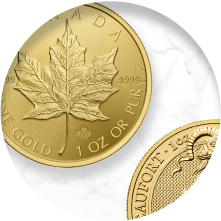


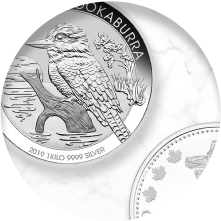
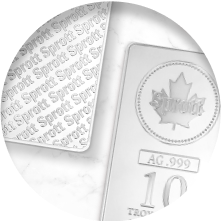

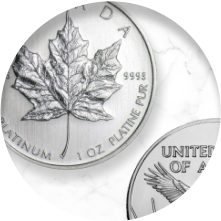

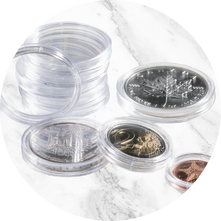
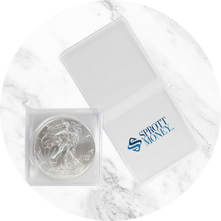



Looks like there are no comments yet.